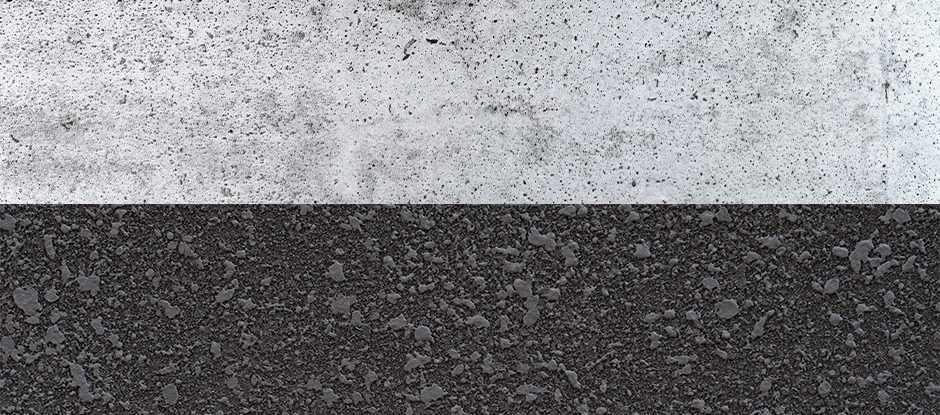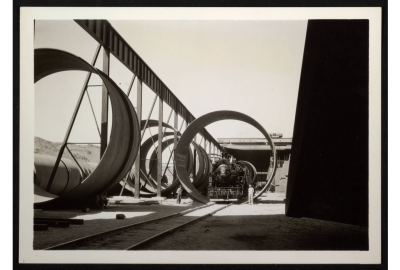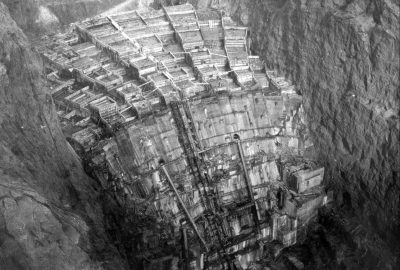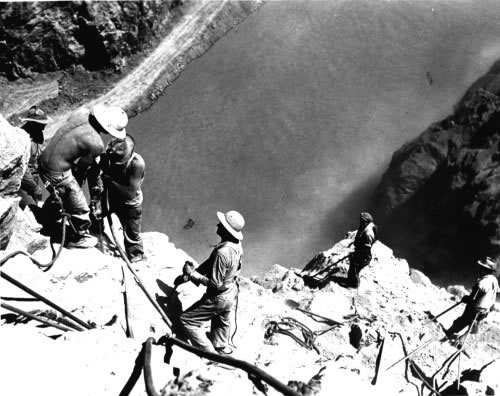Quite literally, since the beginning of human civilization, concrete has been used for building. The Pyramids of Giza were built around 3,000BC. Holding the blocks together are a mortar made from gypsum and lime that hardened like modern day concrete. The Colosseum and Pantheon in Rome, Italy also used concrete-like mortar by mixing fine volcanic ash and clay with similar reinforcement tactics like we use today! Concrete is the most used man-made material in the world for many different reasons, but what exactly is concrete?



Concrete is commonly grouped with asphalt and cement, with many not being able to tell the difference. For starters, cement isn’t typically used by itself as it’s a binder for other materials. Cement is used in mortar for masonry, but commonly mixed with sand, water, and aggregate (both small and large) to create concrete. Asphalt is also a combination of small and large aggregate, but its binder is bitumen. Bitumen is made from petroleum making it super sticky and it can dry very quickly. Overall, the true comparison is between concrete and asphalt with their purposes being similar yet different. If you’re redoing a driveway, you can choose between the two. However, for major road projects, asphalt is used due to its cost efficiency and drying time being very short (you can drive on asphalt laid that same day); Whereas concrete is used for foundations of buildings.

Concrete is also inexpensive and relatively easy to use. However, there are many factors that affect how it’s mixed, laid, and cured. The varying components of concrete can alter the final mixture greatly and ultimately put an entire project behind schedule. If a mix has too much water, it would lead to quicker failure after curing. If a mixing truck must be sent away due to unusable concrete, it takes time to receive a new truck with a correct batch and the scheduled curing time will be affected. The curing portion of concrete is one of the most important steps as this will determine its quality and longevity. Curing takes roughly one full month to fully cure depending on the volume of the pour. It also should be strong enough to hold people walking on the surface to remove forms within the first 24 to 48 hours of being poured and set. However, weather affects the curing process which greatly varies around the world. At temperatures below or at freezing, curing blankets are required to ensure the concrete doesn’t freeze during the curing process. If it does freeze, the concrete will have cracks, flaking, and overall result in a poor-quality job. If the forecast is super-hot, the curing process will be in jeopardy as the process itself generates heat, thus causing evaporation. This is why we see workers wetting down concrete with hoses during the summer, as they are trying to prevent the concrete from drying out and causing cracks.
Overall, the main objective of concrete is to be strong, lasting, and withstand great pressure. This can be accomplished by not only correct mixing and curing procedures but using strong reinforcements. Concrete experiences three types of stress – compression, tension, and sheer. Without reinforcements, the concrete fails quickly with little effort. The most used type of reinforcement used is deformed steel, commonly known as rebar. Building anything from concrete without rebar is doomed to fail as the pressures can become too great. Rebar not only keeps the concrete held together from cracks, but it also gives more points for pressure to be exerted. If an issue were to occur, rebar helps slow down the failure thus creating more time for contractors to assess and address the problem.
One of America’s most famous concrete projects is the Hoover Dam. The dam was completed in 1936, with the first pour of concrete being on June 6th, 1933. Due to the heat from curing mixed with the Nevada/Arizona heat, if the dam were to be poured in a single pour, it would fail due to the immense pressures of Lake Mead, given it ever fully cured, which was estimated to be 125 years. Instead, 50 sq.ft. blocks at 5 feet high were poured with 1-inch diameter pipes running through them allowing ice-cold river water to help them cure faster as they continued construction. Once a block was cured and no longer contracting, the pipes were filled with grout. Pouring the concrete took almost a full 2 years to complete, totaling 3,250,000 cubic yards of concrete used just in the dam construction. Another 1,100,000 cubic yards was used in building the power plants and other features. To put this amount into perspective, there is enough concrete in the Hoover Dam to create a 2-lane 16-foot-wide highway connecting San Francisco to New York (almost 3,000 miles). Even more impressive, the dam didn’t use any rebar during its construction, however the grout filled pipes act similarly. As of now, the concrete is still curing, but maintaining its integrity and getting stronger every year. Due to the incredible design and innovation of the concrete pour, engineers estimate Hoover Dam to last for more than 10,000 years!
Concrete has been a necessity for construction since the beginning of civilization, and some buildings are still standing thousands of years later. It is one of the few materials the industry has that has reached its furthest potential in terms of creating the material, however, there is always room for improving. Yet as construction workers, we are reminded ‘why fix it if it isn’t broken?’ Concrete will be here for thousands of more years to come, and buildings will stay even after humans are gone. If you enjoyed this blog, please leave a comment or share it with your friends and family via the icons below!
Share this Post




